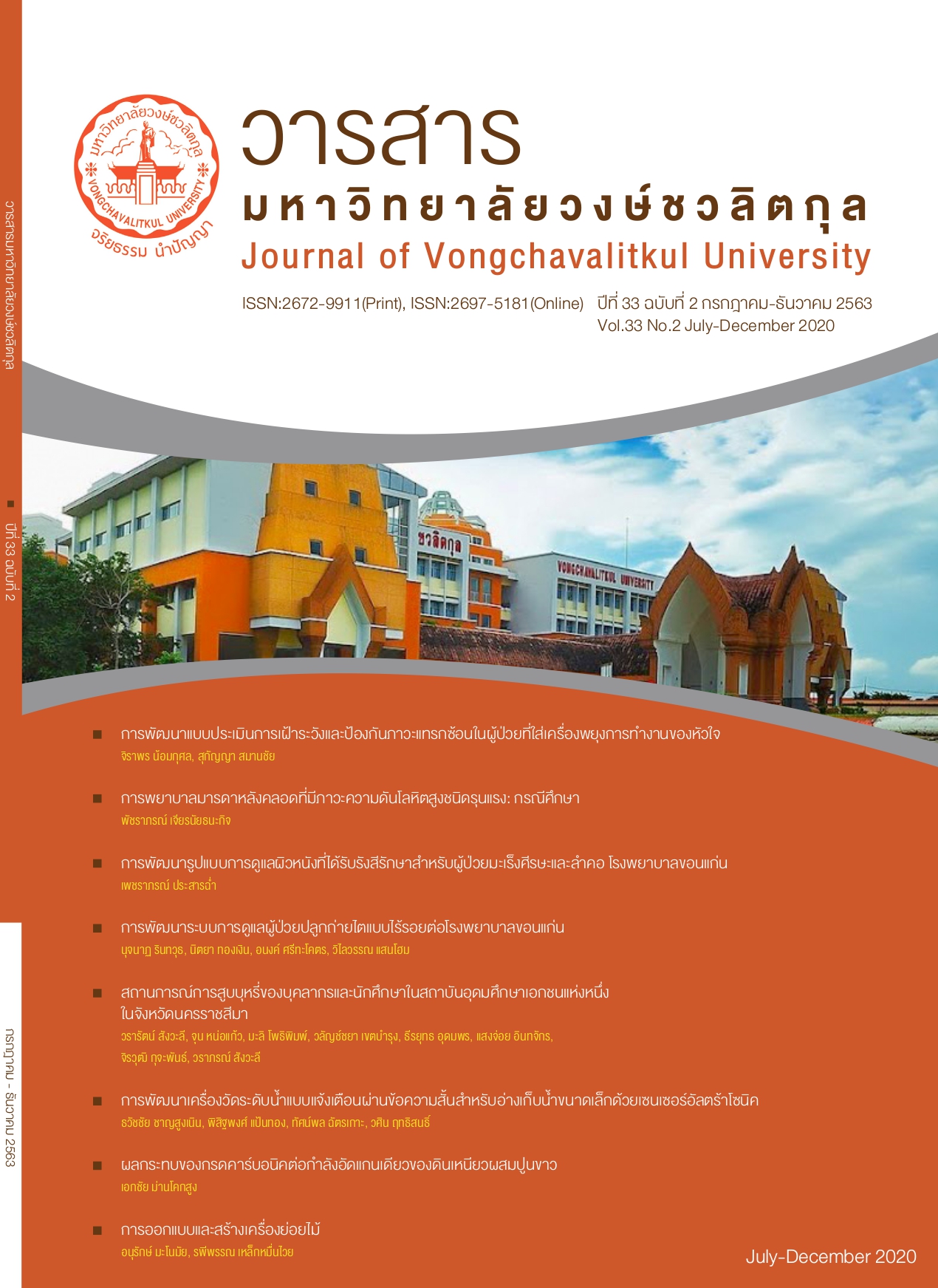Development of a Short-text Alarm Water Level Meter for Small Reservoirs with Ultrasonic Sensors
Main Article Content
Abstract
Objective: The aim of this research was to develop a short-text alarm water level meter for small reservoirs with ultrasonic sensors.
Methods: A water level alarm meter via short message (SMS) for a small reservoir was developed. The water level was measured by ultrasonic wave and sending the measured signal to a microcontroller for processing. The short message (SMS) was sent to the farmers in a real time. The test procedure began by dividing the measured water level into 5 levels as 1,3,5,7 and 10 centimeter. The water levels were measured by 10 times per level. The measured results were recorded together with the received short message (SMS) for analyzing the accuracy of the measurement.
Results: The ultrasonic wave censors could measure the water level at 1 centimeter with the results of 1.002 – 0.988 centimeter, 3.031-2.963 centimeter for the 3 centimeter, 4.993-4.960 centimeter for the 5 centimeter, 7.003-6.973 centimeter for the 7 centimeter, and 10.000-9.974 centimeter for the 10 centimeter. This was an adequate result to accept that the short-text alarm water level meter for small reservoirs is accurate in measuring and sending an alarm signal.
Article Details
References
2. ประพิศ จันทร์มา. (2563). การขับเคลื่อนงานพัฒนาแหล่งน้ำและบริหารจัดการน้ำของกรมชลประทาน. วารสารรัฏฐารักษ์, 62(1), 113-124.
3. ปวีณรัตน์ สิงสิน, รุจ ศิริสัญลักษณ์, บุศรา ลิ้มนิรันดร์กุล และแสงทิวา สุริยงค์. (2562). การปรับตัวของผู้ปลูกข้าวต่อการเปลี่ยนแปลงสภาพภูมิอากาศในอำเภอดอยสะเก็ด จังหวัดเชียงใหม่. วารสารเกษตร, 35(1), 125-136.
4. สำนักบริหารจัดการน้ำและอุทกวิทยา. (2563). แผนการจัดสรรน้ำและเพาะปลูกพืชฤดูฝนในเขตชลประทาน พ.ศ.2563. สืบค้น 7 พฤศจิกายน 2563, จาก http://water.rid.go. th/hwm/wmoc/planing/wet/management2563.pdf
5. สิริพงษ์ กุลพงษ์. (2552). การมีส่วนร่วมของเกษตรกรในการบริหารจัดการน้ำอย่างยั่งยืน โครงการอ่างเก็บน้ำขนาดเล็กอันเนื่องมาจากพระราชดำริ อำเภอภูซาง จังหวัดพะเยา (วิทยานิพนธ์ปริญญามหาบัณฑิต). เชียงใหม่: มหาวิทยาลัยแม่โจ้.
6. Scola, L. A, Takahashi, R. H. C., & Cerqueira, S. A. A. G. (2014). Multipurpose water reservoir management: an evolutionary multiobjective optimization approach. Mathematical Problems in Engineering, 14 pages. http://dx.doi.org/10.1155/ 2014/638259
7. Sally, H., Levite, H., & Cour, J. (2011). Local water management of small reservoirs: Lessons from two case studies in Burkina Faso. Water Alternatives, 4(3): 365-382.


